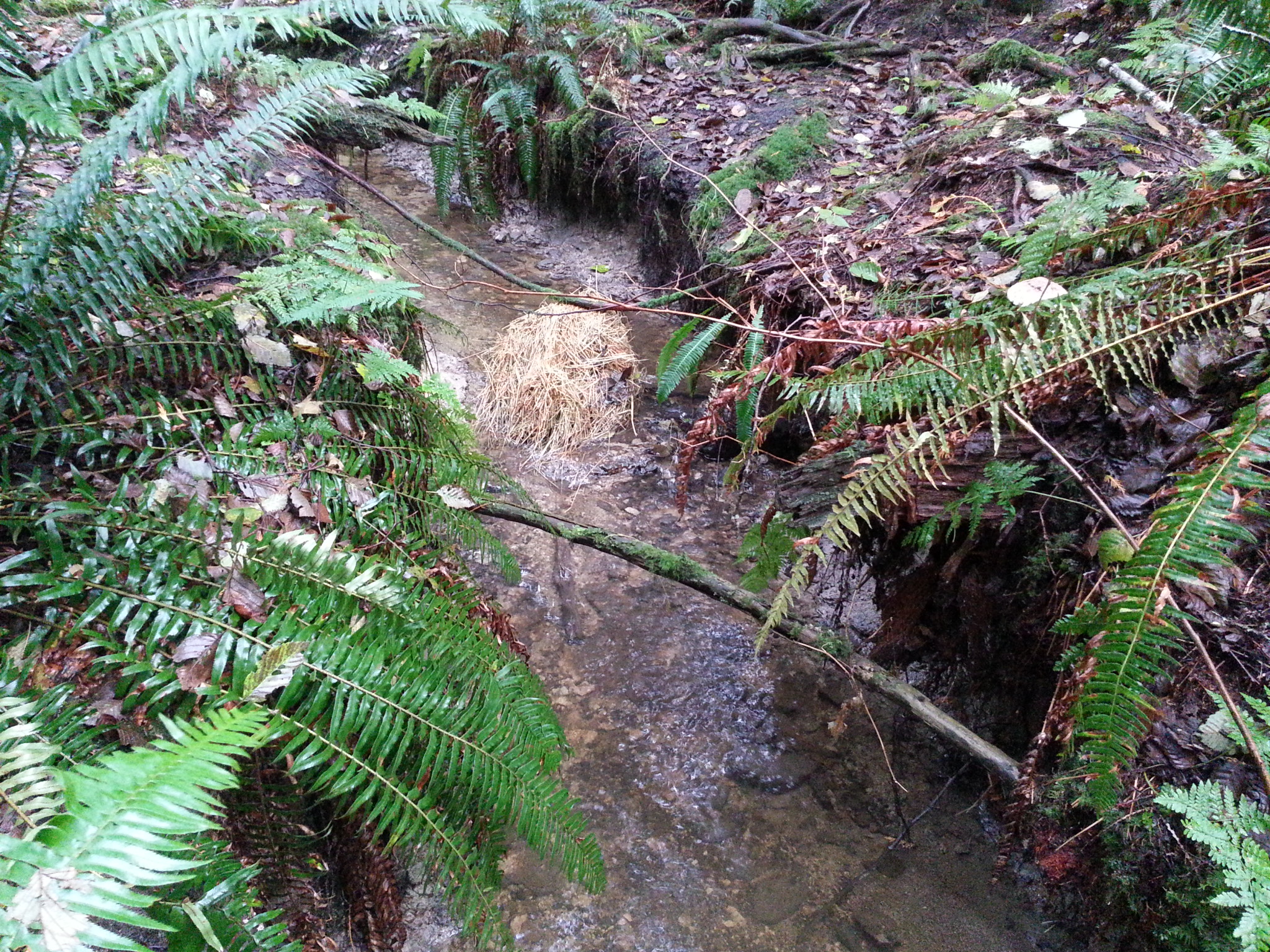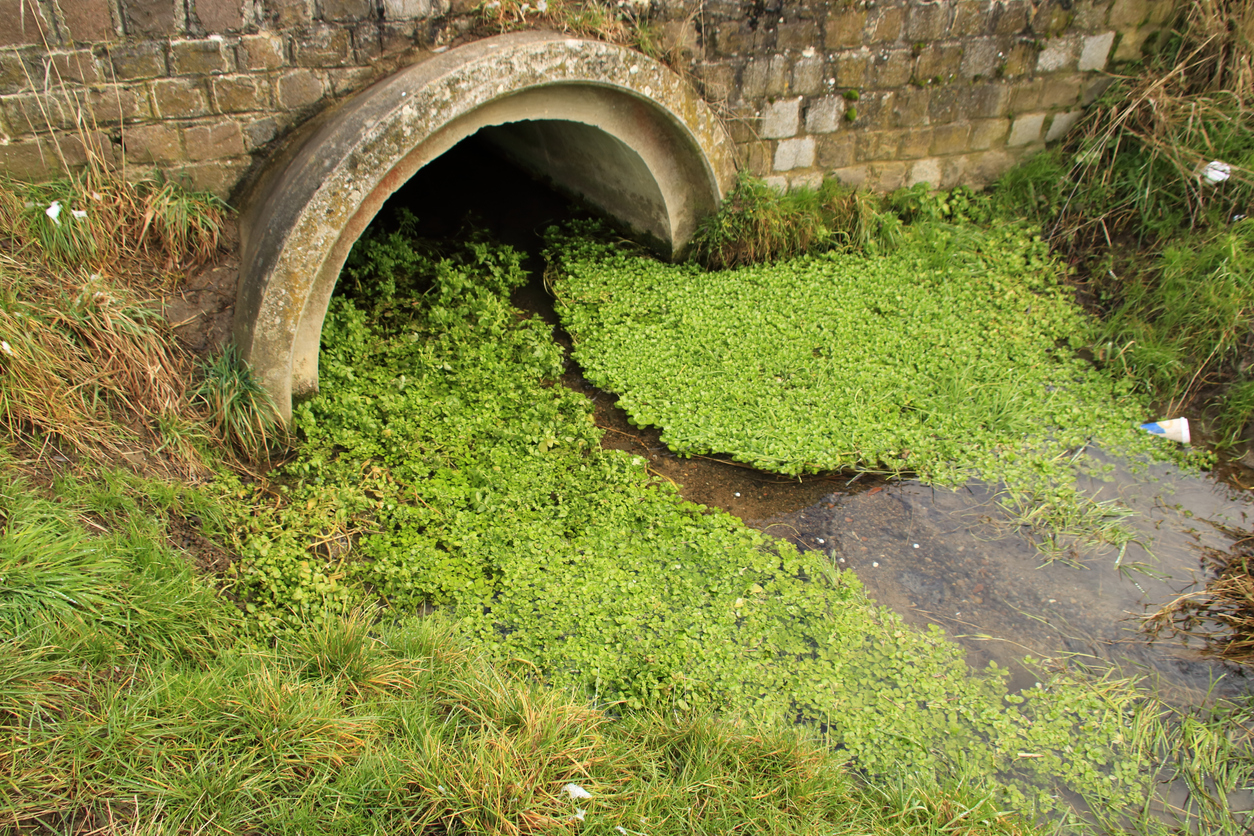How Natural Asset Management is Mitigating Extreme Rain Events
 For more than a decade, the Town of Gibsons has been integrating a robust natural asset management strategy into its financial and operational planning.
For more than a decade, the Town of Gibsons has been integrating a robust natural asset management strategy into its financial and operational planning.
At first, managing our natural assets (specifically, the Gibsons Aquifer) in the same way we manage hard infrastructure (like our sewage pipes and roads) was presented as a means of delivering critical civic services both reliably and at a reduced cost.
But as time went on, it became clear that effectively managing natural assets, such as our trees, our creeks, and our foreshore area, would also help us prepare for climate change.
Integrated Stormwater Management Plan
One of the foundational documents for Gibsons’ natural asset work associated with drainage is our Integrated Stormwater Management Plan (ISMP) – a comprehensive study that examines the linkages between drainage servicing, land use planning and environmental protection.
First created in 2010, the ISMP was updated in 2018, and officially endorsed by Council in March 2019. Since then, the Town has worked to implement a number of the Regulatory, Infrastructure and Study recommendations presented in the ISMP.
These include:
- Upgrading deficient storm sewers along Gibsons Way (completed in 2019)
- Reconstructing the outfall to existing White Tower Park stormwater pond (completed in 2019)
- Constructing a 100-year stormwater pond in Parkland (completed in 2021)
- Identifying sea level rise risks (Coastal Resilience Project) – completed in 2021
- Adopting a Tree Preservation Bylaw in September 2020
- Advancing plans to construct a new stormwater pond in White Tower Park (2021/2022)
- Advancing plans to reclaim and restore damaged sections of Charman and Goosebird Creek
- Flow monitoring of Charman Creek (Charman Creek Assessment) (currently underway)
- Studying the hydrology of the Gibsons Aquifer watershed, including the Charman Lands (Source to Sea Project (2021/2022)
- Updating Gibsons Aquifer Mapping Study (report due in Q1 2022)
- Initiating assessment of the value of the current forest cover (Urban Forest Plan)
All of these projects are focused on better understanding, and managing, the various water bodies and weather events that impact our community.
Given the extreme weather events the province saw in 2021 (i.e. the “Heat Dome” in June and “atmospheric river” rain events in November), we believe the near and long-term value of this work has never been more critical.
How Preventative Maintenance is Mitigating Extreme Rain Events

As part of the Town’s ongoing management of the Town’s assets (both engineered and natural), Town staff have been emphasizing the importance of Preventive Maintenance and how much time, effort, and money this saves over relying on Reactive Maintenance.
This means that staff regularly engage in planned maintenance actions and operational improvements prior to there being an issue, such as flooding or equipment breakdown.
In the instance of winter storms, staff are out immediately prior to, and during, the storms to address drainage concerns before they get out of hand. This has included the inspection of catch basins, ditches, and culverts and conducting any clearing of this infrastructure where necessary.
Through this proactive approach, the frequency of emergency callouts has been greatly reduced and staff now have the time to patrol the municipality during the storm events to clear any debris due to the storm and to identify additional weak areas in our drainage collection system that might need attention before the next storm.
Regular Maintenance of Sanitary Collection System
During heavy rains, the Town’s ageing sanitary collection system also suffers from unwanted stormwater inflow and infiltration (I&I).
Recently, Council approved a policy where the entire drainage and sanitary collection systems are regularly flushed, videoed, and in some instances ‘smoke’ tested to identify locations where I&I is occurring; Council then puts budgets in place to repair these identified deficiencies.
Switching the Wastewater Treatment Plant into ‘Storm Mode’ Sooner
 During particularly heavy rains, the flows to the Wastewater Treatment Plant (WWTP) can more than double from stormwater I&I, taxing the capacity of the plant.
During particularly heavy rains, the flows to the Wastewater Treatment Plant (WWTP) can more than double from stormwater I&I, taxing the capacity of the plant.
When this occurs, the WWTP automatically goes into ‘storm mode’ which allows the plant to treat and discharge the increased flows without overflowing.
As a preventative measure, staff are now manually switching the WWTP into storm mode well in advance of heavy rains which further increases the ability of the plant to accept these heavy flows.
As I&I issues are addressed, the flows to the plant will decrease during storm events.
Ongoing Inspection, Monitoring and Maintenance of Town’s Creeks
The Town’s creeks are also inspected on a regular basis by in-house staff professionals as well as contracted professionals, such as biologists and geotechnical engineers.
These inspections help identify and address locations of concern. In some instances, larger improvement projects are identified; staff note these locations and monitor them during storm events.
Stream flows are also currently being monitored with in-stream sensors.
These sensors will provide the necessary data for any future culvert replacements or channel improvements.
The planned extension of the White Tower stormwater ponds will further buffer the flows to Charman Creek; the completed ponds in the Parkland subdivision store stormwater from heavy rains (up to 1:100-year events) and release it to Chaster Creek at non-damaging rates (1:2-year event flows).
A key goal of the Town’s Natural Assets strategy is to ensure that the community’s environmental health is not compromised by conveying development-related storm flows. Furthermore, in many instances, steps that the Town is taking today lessens the impact from past development flows.
How Gibsons’ Residents Can Help Prevent Storm Damage

Here are some actions each one of us can take to help our community come through extreme rain events with as little damage as possible:
- Please keep ditches and culverts that are adjacent to your property clear of debris. If the waterways become clogged, please clear them or call the Town to report the issue at 604.886.2274;
- Do not re-direct or divert excess water flows over an embankment, as this causes long-term erosion issues;
- Please do not blow leaves etc. into road gutters or ditches, as this can clog stormwater drains and catch basins; and
- Please do not dump green waste at the top of local ravines or onto steep slopes. While this may seem like a harmless (or even environmentally friendly) activity, the green waste absorbs large amounts of water and adds weight to the top of the slopes, leading to instability and potential slides.

